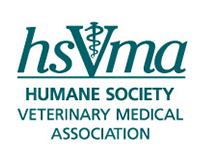Suggested Revisions to Specific Euthanasia Methods
Inhalant Agents
- It was recommended that carbon monoxide be described only as conditionally acceptable for dogs and cats and wildlife, with emphasis placed on the condition of the chamber and the barrel and the loading of animals into the chamber.
- It was recommended that carbon dioxide (which causes distress to humans and to all mammals in which its use as a euthanasia agent has been carefully investigated) be declared unacceptable as a euthanasia agent in a shelter environment.
- It was recommended that shelters in those states that are allowed legal access to injectable euthanasia drugs be encouraged to transition from inhalant agents such as carbon monoxide and carbon dioxide to injectable agents. It was also recommended that those states that do not currently allow shelters access to injectable euthanasia agents be encouraged to pass such direct licensing laws.
- It was recommended that the use of carbon dioxide as a sole euthanasia agent in a laboratory setting be classified as unacceptable.
- It was recommended that nitrogen and argon be used only for euthanasia of those species in which it has been shown to be non-aversive. For this reason it was recommended that argon be classified as unacceptable for use with rats.
Penetrating Captive Bolt
- It was recommended that the penetrating captive bolt be considered only a conditionally acceptable method for horses.
- It was recommended that all references to the use of penetrating captive bolt as a suitable and humane means of euthanasia for dogs be removed from the document and that it be classified as unacceptable for dogs.
- It was recommended that the use of penetrating captive bolt be deemed inappropriate for the euthanasia of all wildlife species.
Gunshot
- It was recommended that the document state forcefully that lethal gunshot landmarks can vary significantly by species and that no one attempting to use the gunshot method of euthanasia should ever do so without confirming the species-specific lethal landmarks of the animal being euthanized.
Electrocution
- It was recommended that electrocution be classified as unacceptable for dogs and equines.
Kill Traps
- It was recommended that kill traps be classified as unacceptable.
Adjunctive Methods
Pithing:
- It was recommended that pithing be classified as unacceptable.
Poisoning:
- It was recommended that poisoning be classified as unacceptable
Equine Euthanasia
- It was recommended that the qualification be made that if an equine is given a neuromuscular blocking agent such as succinylcholine in order to better control the animal, euthanasia should proceed as soon as control is achieved in order to avoid the chance that the horse might experience death by suffocation.
- It was recommended that if gunshot remains a conditionally acceptable technique for equine euthanasia, the qualification be made that the shooter be both (1) trained in the technique of shooting, and also (2) trained in the knowledge of the proper lethal anatomical equine landmarks to insure the first shot is fatal.
- It was recommended that penetrating captive bolt be classified as only conditionally acceptable for use in equine euthanasia.
Nuisance Wildlife
- It was recommended that a broader discussion about the mass euthanasia of wild species be included in the Guidelines.
Euthanasia of Non-Conventional Species - Marine Mammals
- It was recommended that explicit clarification be made that gunshot be a conditionally acceptable method of marine mammal euthanasia only for small cetaceans, and not for pinnipeds.
Euthanasia of Animals Raised for Fur Production
- It was recommended that a statement be inserted into the opening paragraph emphasizing that because of the level of excitability and stress such procedures entail, any practices that involve handling and forcible removal of animals from cages prior to killing cannot be considered euthanasia.
- It was recommended that a general statement be inserted into the opening paragraph emphasizing that if mass boxes are used to contain animals raised for fur production during gas killing, such killing is not considered euthanasia.
- It was recommended that carbon dioxide be removed as an acceptable agent for the euthanasia of mink.
Mass Euthanasia
- It was recommended that the AVMA Guidelines addressing mass euthanasia be expanded to include more information about euthanasia methods—by species— under various disease and disaster scenarios.
- It was recommended that fire-fighting foam not be included in the revised Guidelines. When fire-fighting foam is used the means of death is occlusion of the respiratory tract. This is equivalent to death by drowning or suffocation, which are not recognized as humane methods.
|
